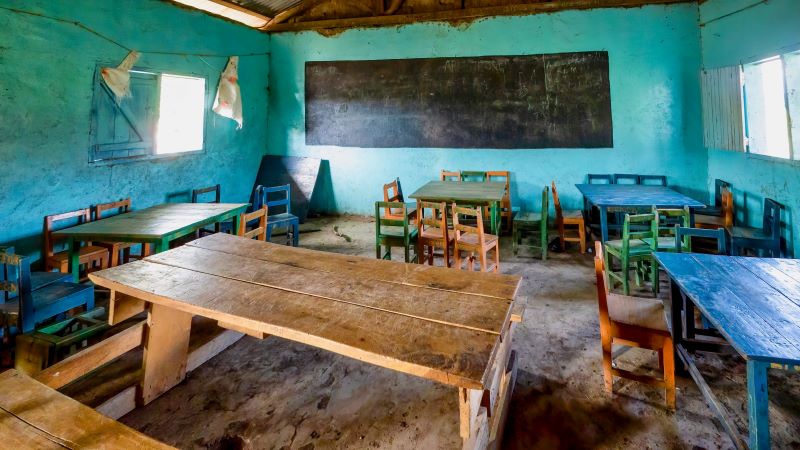Recommended
Across the world, children are facing unacceptable levels of violence in schools. We need more and better data to understand this problem and find the best ways to eliminate violence in schools. But getting accurate measures of violence is not easy. When it comes to collecting data for children in school-based settings, several challenges emerge. These are related to the children’s age and their capacity to understand the questions being asked; the need to ensure a safe and private environment to collect data; and the need to navigate procedures for collecting parental and children consent and safeguarding children’s rights as participants in research, among others.
There is a growing body of research examining how data collection methods such as face-to-face interviewing, self-administered questionnaires, or list experiments (learn more about this method here), affect disclosure of intimate partner violence against women, but, as pointed out in a new paper by the London School of Hygiene and Tropical Medicine, commissioned by CGD, there is less research exploring how children respond to different data collection methods. This new paper draws on a systematic review of studies from high-, middle- and low-income countries which collected data on children's experiences of violence to analyze if and how data collection methods affect children’s disclosure of school-related gender-based violence (SRGBV).
Fourteen studies were included from the systematic review. All the studies directly interviewed children and young people, included self-reported measures of violence and compared data collection methods quantitatively. Four studies were conducted in school settings—where only one was in a low-income country (Uganda)—and 10 were conducted outside school settings. The findings from these studies suggest that the data collection method does influence the disclosure of SRGBV and that the current prevalence of SRGBV measured in international surveys may be underestimated. Here, we highlight the key findings from the paper.
1. The prevalence of violence disclosed varies significantly by data collection method
Although only four studies compared data collection methods in school settings, their findings reveal significant differences in the prevalence of reported violence by survey method, showing a 0 to more than 500 percent variation in the prevalence of violence measured using different data collection methods.
What methods were tested in these studies? Seven methods were included across these four studies, including face-to-face-interviewing, a web-based survey, and the sealed envelope method where children responded on a piece of paper and placed it in a sealed envelope and put that into a box in the classroom. Other methods included a paper self-report questionnaire, and a scenario-based report alongside a self-report questionnaire, where participants first listened to an audiotape of actors narrating and performing specific violent acts and were then asked to complete a questionnaire asking about victimization or perpetration of these acts. Although the sample of studies is too small to come to definitive conclusions about which is the best method for collecting data on SRGBV, it is possible to identify which method traits can make a difference in the disclosure and measurement of violence.
2. Anonymous methods may result in higher levels of disclosure
Results of two of the four studies, one measuring sexual violence and one bullying, suggest that using more anonymous methods is associated with higher levels of disclosure by children. There was a higher disclosure of violence when using the Sealed Envelope method or a robot to administer an interview compared to when researchers interviewed children face-to-face. Findings from the other 10 studies conducted outside school settings with children and young people also suggest that methods that allow children to respond more anonymously, like web surveys and audio computer-assisted self-interviewing (ACASI), may increase the likelihood of reporting violence compared to face-to-face methods, particularly for more sensitive questions.
3. There are benefits and challenges to each data collection method
Each data collection method presents its own unique challenges and it is important to consider these when deciding on which methods to use. Is the method easy to implement? Can it be conducted in a private setting? Are you able to follow up with specific individuals who need referrals for other services?
In the broader evidence base, most evidence exists for ACASI in increasing disclosure of violence compared to face-to-face-interviewing. This is a more anonymous method and may be cheaper to implement. But it does require some computer literacy, and a degree of privacy so that devices cannot be overseen. This can be particularly challenging in schools, where classrooms can be crowded and teachers may oversee data collection. Written questionnaires are another option, but the questionnaire does have to be simpler as skip patterns cannot be programmed in, unlike when computers or tablets are used. They also tend to have lower-quality data than computers or tablets. When methods are more anonymous, there are also challenges with identifying individuals who need to be referred for certain services. It may be that a participant is distressed, but interviewers may not be present during data collection to make an immediate referral. Face-to-face-interviewing can overcome some of these challenges, though it is not fully anonymous and training of interviewers is likely to be very important to build rapport with the respondent. Since there are pros and cons to all methods, one option is to combine methods, for example using sealed envelopes to improve other methods, particularly for sensitive questions.
4. Large-scale international surveys may be underestimating the current prevalence of violence
The paper also discusses current practices in large-scale, nationally representative surveys that collect information on SRGBV and are administered in at least one low- or middle-income country. Five surveys were identified. Some are school-based surveys where individuals self-complete questionnaires. These do provide anonymity but may have limitations in low literacy settings. Others are household-based surveys where individuals are interviewed face-to-face. These are more accessible but may result in lower disclosure compared to fully anonymous methods. These limitations suggest that large-scale surveys may be underestimating the prevalence of SRGBV. Authors highlight the need to explore different ways of supporting disclosure in large-scale data collection methods, in a way that is accessible to all, ensures privacy and allows for longer questionnaires.
5. There is a need for more research to establish which data collection methods best support children and young people to disclosure their experience of violence
What is clear from this paper is the need for more research. There are only four studies looking at violence in school settings and only one of these studies was in a low-income setting. The results point to promising strategies for SRGBV data collection, but there are currently not enough studies to conclusively say which methods would increase disclosure and how feasible these methods are among children and in school settings.
Future research should explore the disclosure of violence by survey method and location of data collection noting whether violence disclosure is affected by other factors, including the respondent’s age and gender, and the context of violence. Alongside this, studies need to explore the ethical and safety considerations of different data collection methods in school settings in particular.
Finally, we do not know enough about children and young people's views on the different data collection methods. Of the fourteen studies included in the systematic review, only one study asked about children’s views of different methods. It is essential that studies incorporate methods such as feedback interviews to understand the views and concerns of children and young people and ensure their voices are included in the design and testing of data collection methods.
Disclaimer
CGD blog posts reflect the views of the authors, drawing on prior research and experience in their areas of expertise. CGD is a nonpartisan, independent organization and does not take institutional positions.
Image credit for social media/web: malajscy / Adobe Stock







